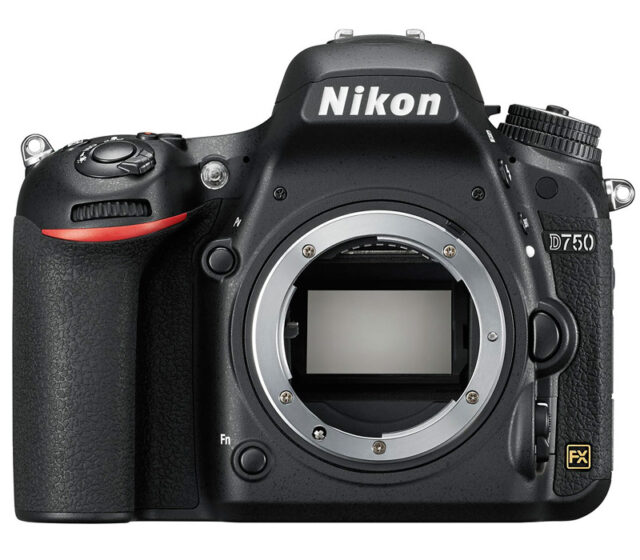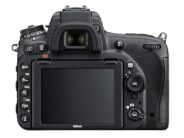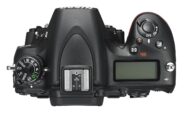Announced
Production status
System
Nikon F system cameras
- Nikkorex F
- Nikkormat EL
- Nikkormat ELW
- Nikkormat FS
- Nikkormat FT
- Nikkormat FT2
- Nikkormat FT3
- Nikkormat FTN
- Nikon D3
- Nikon D3s
- Nikon D3X
- Nikon D4
- Nikon D4s
- Nikon D5
- Nikon D6
- Nikon D600
- Nikon D610
- Nikon D700
- Nikon D750
- Nikon D780
- Nikon D800
- Nikon D800E
- Nikon D810
- Nikon D850
- Nikon Df
- Nikon EL2
- Nikon EM
- Nikon F
- Nikon F100
- Nikon F2
- Nikon F3
- Nikon F4
- Nikon F5
- Nikon F6
- Nikon FA
- Nikon FE
- Nikon FE10
- Nikon FE2
- Nikon FG
- Nikon FG-20
- Nikon FM
- Nikon FM10
- Nikon FM2
- Nikon FM2/T
- Nikon FM3A
- Nikon N2000
- Nikon N2020
- Nikon N4004
- Nikon N4004S
- Nikon N50
- Nikon N5005
- Nikon N55
- Nikon N60
- Nikon N6000
- Nikon N6006
- Nikon N65
- Nikon N70
- Nikon N75
- Nikon N80
- Nikon N8008
- Nikon N8008S
- Nikon N90
- Nikon N90S
Nikon D750
35mm AF digital SLR camera • Discontinued
Specification
| Format: | |
| 35mm full frame | |
Imaging sensor: | 35.9 × 24mm CMOS sensor |
Resolution: | 6016 × 4016 - 24 MP |
Sensor-shift image stabilization: | - |
| Nikon F [46.5mm] | |
| Shutter: | |
Type: | Focal-plane |
Model: | Electronically controlled |
Speeds: | 30 - 1/4000 + B |
| Exposure: | |
Exposure metering: | Through-the-lens (TTL), open-aperture |
Exposure modes: | Programmed Auto |
| Aperture-priority Auto | |
| Shutter-priority Auto | |
| Manual | |
| Physical characteristics: | |
Weight: | 830g |
Dimensions: | 140.5x113x78mm |
Manufacturer description
TOKYO - Nikon Corporation is pleased to announce the release of the D750 Nikon FX-format digital SLR camera.
The D750 is the first in a new line of the compact, lightweight and slim Nikon FX-format bodies offering the superior agility as well as full-scale specifications needed for high-quality imaging and pursuing those of professional models.
The D750 offers superior image quality with an effective pixel count of 24.3-million pixels, a new Nikon FX-format CMOS sensor, and the EXPEED 4 image-processing engine. Adoption of a monocoque structure utilizing a carbon fiber composite material (new material*), magnesium alloy and a completely new layout for the internal structure have achieved a smaller, lighter, and slimmer camera that still offers a firm and steady grip.
In addition, the D750 offers superior high-sensitivity performance and AF that supports shooting in low-light conditions, enabling hand-held shooting of even scenes offering little in the way of lighting. It is equipped with advanced functions nearly equal to those of professional models, and is the first FX-format model to be equipped with a tilting LCD monitor and built-in Wi-Fi® function that add to user convenience.
The D750, which combines superior agility with excellent added value in a compact, slim and lightweight body, eliminates various limitations users face with shooting, enabling greater freedom of expression, and the ability to express their intent, with their photographic imaging. Forming a new line of Nikon FX-format models, the D750 responds to the desire of active photo hobbyists to be ever more creative and feeds their great desire to prove themselves.
D750 Primary Features
1. The fusion of outstanding agility and an effective pixel count of 24.3-million pixels with the excellent image quality of the FX format
In addition to being the compact, lightweight and slim camera in the history of the Nikon FX format, the D750 offers a level of agility never before seen with a deep grip that enables a firm and steady hold that was achieved by making the camera significantly slimmer. The fusion of this agility, an effective pixel count of 24.3-million pixels, and the excellent image quality of the FX format enables greater freedom of expression and the ability to better express intent with photographic imaging, and also opens the door to new shooting possibilities.
2. Clear, high-sensitivity performance that exceeds that of high-end models made possible by a new Nikon FX-format CMOS sensor and the EXPEED 4 image-processing engine
The combination of an effective pixel count of 24.3-million pixels, the new Nikon FX-format CMOS sensor, and the EXPEED 4 image-processing engine achieves both excellent sharpness and superior image quality. By making the pitch of each individual pixel on the new image sensor larger, a broad dynamic range is preserved, and superior high-sensitivity performance that enables rich and smooth expression of tones with very little noise has been achieved. In addition, adoption of new algorithms with EXPEED 4 achieves faithful color reproduction and minimizes noise at high sensitivities. Specifically, the D750 even surpasses the D810 in image quality at high sensitivities, and the large pixel pitch delivers advantages in definition, depth, tonal gradation and clear color. As a result, finely balanced image quality is delivered. This superior high-sensitivity performance is also demonstrated with movie recording.
3. Full-scale specifications that pursue those of professional models
Because the D750 responds to the desire of active photo hobbyists to be ever more creative, it has been equipped with functions and performance nearly equal to those available with high-end models for professional and advanced amateur photographers.
Advanced Scene Recognition System
Detailed analysis of the shooting scene using scene information calculated by the 91K-pixel (approximately 91,000 pixels) RGB sensor and the image sensor increases the accuracy of automatically controlled systems such as AF, AE, i-TTL flash control, and AWB. Faces are also detected when images are framed using the optical viewfinder.
Highlight-weighted metering
Exposure is controlled with automatic detection of the brightest portion of the frame. This controls loss of detail in highlights (blown highlights), even when the primary subject is lit by a spotlight on a stage.
Highly dense 51-point autofocus system
Adoption of a new AF sensor module, and 51 focus points covering a broad range of the frame, enables certain acquisition of the intended subject. This makes for smooth autofocusing, even in low-light conditions of -3 EV(ISO 100, 20°C).
High-speed continuous shooting
The D750 is capable of capturing up to 100 shots*1 in a single burst of continuous shooting at 6.5 fps*2 in both FX format and DX format.
An optical viewfinder with approximately 100% frame coverage
The viewfinder built into the D750 offers better light transmissivity and colors, makes it easier to achieve optimal focus when fast lenses are used, and is brighter. An OLED has been adopted for the viewfinder display, making it clear and easy to read.
A variety of movie-recording functions
A sequencing mechanism for which the same four-motor system used by the D810 has been adopted enables "power aperture" with movie recording. The D750 also responds to the needs of professional filmmakers with the ability to output uncompressed movies to external HDMI recorders while simultaneously storing them on a memory card inserted in the camera. It also offers advanced functions, such as Wind Noise Reduction and Frequency Response settings, that ensure movie recording with high-quality sound.
The same high level of dust and water resistance as the D810
4. A compact, lightweight, slim, and very strong monocoque body that expands shooting possibilities with superior agility
The D750 is the first Nikon FX-format camera for which a monocoque structure, which serves as the exterior frame that protects the internal structure with great strength, has been adopted. A carbon fiber composite material (new material), has been adopted for the front body, where important mechanisms such as the imaging unit are incorporated, and the front cover, and a magnesium alloy has been adopted for the rear and top covers.
Use of these materials not only helps to make the camera lighter, but also ensure superior strength and rigidity. In addition, positioning of the integrated circuit board and imaging unit in nearly the same place and optimization of drive mechanism positioning have helped to make the camera significantly slimmer. This, in turn, has enabled a deeper grip for a more firm and steady hold. The great maneuverability afforded by a size suited to a variety of shooting conditions greatly expands shooting possibilities for users.
5. The first Nikon FX-format camera to be equipped with a tilting LCD monitor that supports shooting from any angle
The D750 is the first Nikon FX-format camera for which a tilting LCD monitor has been adopted. The monitor can be tilted up as much as approximately 90° and down to approximately 75° for flexible adjustment over a broad range. As the LCD monitor does not extend away from the camera to a great extent, the compact size and great maneuverability of the D750 is maintained, even with more intuitive shooting from a variety of angles. Adoption of Nikon's original 3-axis hinge structure and a design that gradually pushes the monitor away from the camera when it is opened to face upwards prevent obstruction of the monitor by the camera's eyepiece, even when it is opened the full 90°. In addition, when tilted downward by 75°, the monitor swings back so that the monitor won't touch the tripod base. You can comfortably tilt the monitor even when the camera is on the tripod. The superior operation of this tilting monitor makes live view photography and movie recording fun and easy by allowing users to change the angle of the camera with regard to the scene or subject for great freedom in choosing composition.
6. The first Nikon FX-format camera to be equipped with a built-in Wi-Fi® function for collaboration with smart devices that enables image transfer and remote shooting
The D750 is the first Nikon FX-format camera to offer a built-in Wi-Fi® function that enables wireless communication in both directions with smart devices such as smartphones and tablets. Still images exhibiting the superior quality possible only with a digital SLR can be uploaded to a smart device via the Internet that allows users to share their images with many people using social networking services and the like. In addition, the live view screen can be displayed on a smart device, enabling use of the smart device to capture not only self portraits and group photos, but also shooting suited to a variety of applications, including remote photography when the camera is mounted on a tripod.
Additional Features
- The latest Picture Control system, which enables flexibility in every aspect of image adjustment
- A TFT LCD monitor for which an RGBW array has been adopted for a bright and clear display, and with which monitor color balance can be adjusted
- The first FX-format model to be equipped with seven special effects modes that allow users to easily enjoy expressing themselves with effects possible only with digital imaging
- Three image area options for still images that allow for adjustment of the angle of view of the lens using the camera
- Multi-area Mode Full HD D-movie with two image area options
- A time-lapse photography function that allows for simple, in-camera creation of time-lapse movies
- Dual SD memory card slots that enable more efficient handling of data
- Built-in flash capable of controlling multiple flash units with wireless multiple flash-unit photography
Similar cameras (2)
35mm full frame • Auto focus • Digital • Singe-lens reflex • Nikon F mount
| Model | Shutter | Metering | Modes | Year |
|---|---|---|---|---|
| Kodak DCS Pro 14n | E, 1/4000 | TTL • OA | PASM | 2002 ● |
| Kodak DCS Pro SLR/n | E, 1/4000 | TTL • OA | PASM | 2004 ● |


